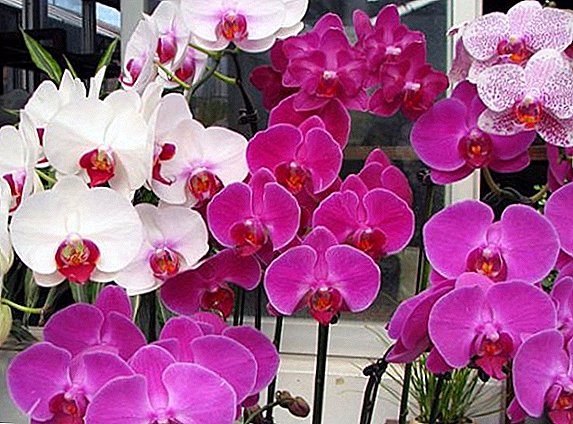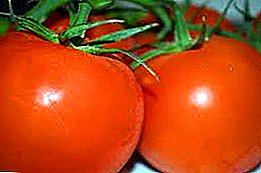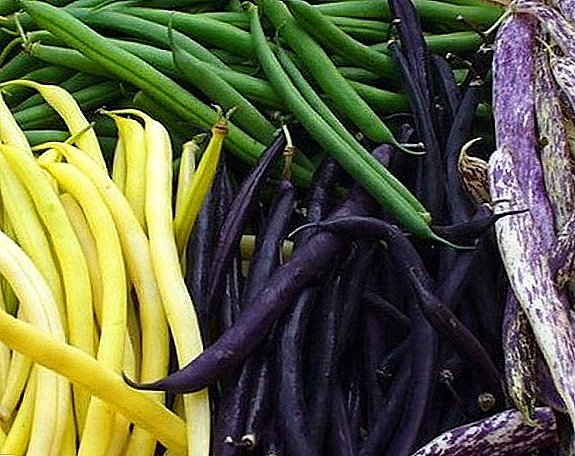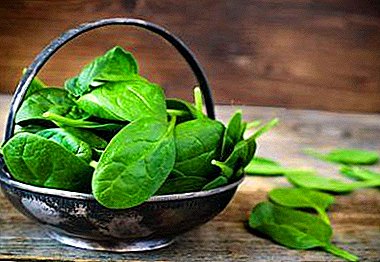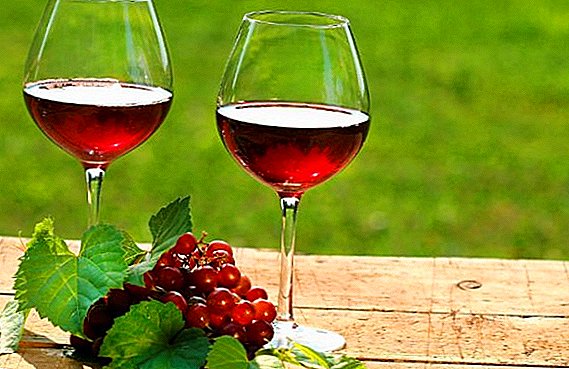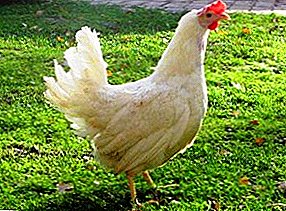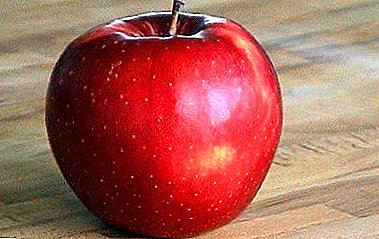
Apple tree Bryansk got its popularity thanks winter hardiness and immunity from scab.
Variety is different high yield and good survival rate.
Description of the apple variety Bryansk, features of cultivation and care, photos of the fruit and much more - hereinafter.
What kind is it?
 Apple variety Bryansk refers to early winter varieties.
Apple variety Bryansk refers to early winter varieties.
Gives a crop that is suitable for gathering at the end September-early October.
The shelf life of the fruit is high, the apples are preserved and suitable for consumption. until February.
Store recommended in cellars and basements.
IMPORTANT: If the place of storage is not isolated from the cold, it is necessary to warm it, since apples can start to rot from low temperatures during warming.
Winter varieties also include: Idared, Golden Delicious, Winter Pear, Fuji and Rozhdestvenskoe.
Pollination
Variety Bryansk does not need compulsory pollinationcapable of bear fruit alone. If you decide to plant other trees, it is recommended to combine with winter varieties.
Description variety Bryansky
Apple-tree varieties Bryansky sredneroslaya, fruits of moderate size. Consider more.
 Apple Bryansk refers to species that have medium height, differs in speed of building of a trunk and krone.
Apple Bryansk refers to species that have medium height, differs in speed of building of a trunk and krone.
Formed crown has a rounded shape. Foliage moderate density. Branches rush up, for the most part bends are absent.
The bark on the young branches is smooth, with a greenish overflow. The branches grow at an obtuse angle.
The leaves are rather large, have an oval shape, the edges are finely serrated, the tip twists spirally.
The leaf plate is flat, in places slightly wrinkled, the buds at the time of maturation are conical, fleecy.
The fruits of apple varieties Bryansk differ large or medium sizeGenerally mass is approximately 150 grams. In some cases reaches 300 grams.
The apples have a rounded shape, one-dimensionality prevails, weak ribbing. On the skin of the apple has a crimson blush, but the main color is light green.
The surface of the fruit is smooth, has a glossy sheen. Pulp of moderate density and white color, pleasant sweet-sour taste. The fruit is juicy and fragrant.
Excellent varieties of fruit can also boast such varieties: April, Aphrodite, Aport, Orlik and Screen.
A photo




Breeding history
Variety bred in the city of Bryansk. Breeder A.I. Astakhov crossed hybrid form SR0523 and grade Winner.
When crossing, they wanted to get a variety that is not only immune to extremely cold conditions, but also to scab. The task has been completed.
Place of birth and distribution
Variety is well caught on the territory Bashkiria, the Southern Urals and the Ryazan region, successfully endured some of the coldest winters. To date, the variety has spread in Russia, Belarus, Ukraine.
In these territories, the following apple varieties are successfully grown: Augustus, Antonovka ordinary, Granny Smith, Jonathan and Aport.
Yield
 Variety is different infancy and increased yield. The first fruits that can go into use, gives to 3-4th year of life.
Variety is different infancy and increased yield. The first fruits that can go into use, gives to 3-4th year of life.
It differs favorably from other varieties. abundance, regularity of annual crops. When a tree comes into full force, the yields of trees planted per hectare are: from 270 to 350 centners / ha.
High marketable quality of the fruit provides them with good sales, besides, the fruits are easily transported and, subject to the necessary conditions, are stored until February.
The high yields also differ varieties: Venyaminovsky, Vityaz, Dessert Petrova, Elena and Imrus.
Planting and care
Planting apple varieties Bryansk made standard, as with other species.
IMPORTANT: Choose an apple-tree seedling with a smooth trunk and, if possible, without over-dried roots. Saplings with twisted stems and with dry roots, take root and grow worse.
When choosing a planting site, avoid those on which the shadow of other trees falls. In the process of apple growth high illumination needed.
 In order to eliminate the probability of breaking the tree with a gust of wind, choose the area that is at a slight angle.
In order to eliminate the probability of breaking the tree with a gust of wind, choose the area that is at a slight angle.
The distance from other apple trees should be about four meters.
Pit for planting must be filled with fertilizer. Recommended doses: 1 bucket of humus, 1 kg of mineral fertilizer, 700 g of ash.
The fertilizer is mixed and tamped down in layers in the planting pit.
When planting, it is necessary to ensure that the roots are striving downwards, for this purpose a small earthen mound is created in the pit, on which the seedling is “placed”.
IMPORTANT: If the roots tend upwards, the tree will not be able to eat properly and there is a chance that it will get burns.
It is necessary to cover the ground progressively, layer by layer. Make sure that the neck of the tree remains open, otherwise rotting may begin.
Pruning. Wood growth must be artificially restricted in early spring.
In addition, it is important to exclude those branches that still have old buds, after removing the apple tree will grow new, young shoots. Trimming significantly improves the quality and quantity of the crop.
 May and April do two sprays. prophylactic solutions for pests and diseases.
May and April do two sprays. prophylactic solutions for pests and diseases.
First time it needs to be done at a time when buds are blooming, second - with the appearance of buds.
In the spring, it is necessary to feed urea, nitrate and ash.
Recommendation: plant trees with grass or clover, then moisture will last longer.
Diseases and pests
Cancer and black cancer. A dangerous disease that is a fungal infection. In advanced cases it affects the tree on the stem, roots and fruits.
It manifests itself with oily ulcers first on the trunk, then on the roots. There are also cases of growths. The affected parts of the cortex exfoliate, and ulcers do not become overgrown.
Treatment: First, the affected parts — damaged bark, leaves, and fruits — are removed and burned beyond the garden area.
TIP: Cut out the affected parts with a sharp knife, grasping partially healthy tissue, since the infection may not appear immediately and the disease will return again.
Treatment usually means cleaning and disinfecting wounds: 2% solution of blue vitriol lubricates the damaged areas after removal of the infected areas, then washed with garden decoction.
 Fruit rot. Despite the fact that Bryanskoye is immune to scab, this variety is especially susceptible to infection with fruit rot.
Fruit rot. Despite the fact that Bryanskoye is immune to scab, this variety is especially susceptible to infection with fruit rot.
The source of infection is last year's fruits, which were covered with mold and were not removed in time from under the tree.
After infection, at the time of fruiting, there is a massive rotting of fruits that have not yet reached full maturity.
The rot initially forms a small brown speck, which eventually spreads to the entire area of the apple.
Treatment: It is easier to apply preventive measures than to cure.
After each fruiting, it is necessary to carefully clean the garden, excluding the possibility of rotting uncollected fruits.
The rotten fruits are burned. If during the fruitful period on the fruits that have not yet fallen from the tree, symptoms of the disease are detected, they must also be harvested and burned, and the apple tree treated with Bordeaux mixture or its substitutes.
Resistant to scab varieties: Daughter Pepinchik, Uralets, Hero of the Day, Stroyevskoe and Rennet Chernenko.
Phyllosticosis The causative agent is mushroom spores. Manifested in small brown spots, which, with no treatment, affect all healthy foliage.
Mushroom overwinters on fallen leaves, its development contributes to high humidity.
Treatment: Destruction of fallen leaves before the onset of cold weather, spraying trees with a five percent solution of urea during blooming and also in the fall.
 Repeated spraying is done after completion of flowering. In case of detection of the disease already on the tree, the diseased leaves break off and burn, the measures are the same.
Repeated spraying is done after completion of flowering. In case of detection of the disease already on the tree, the diseased leaves break off and burn, the measures are the same.
Do not forget about garden pests. take timely preventive measures against the sapod, moth, apple moth, silkworms and the haws and your harvest will always be in order.
The variety of apple trees Bryansk has a sufficient number of advantages, including the annual fruit bearing, the abundance of the crop and the prostate in the care.
Especially well suited for those regions where winters are quite cold.
But there is also a significant disadvantage of this breeding find: the apple tree is not resistant to fruit rot, so it will require close attention to the annual harvesting of unsuitable fruits.



